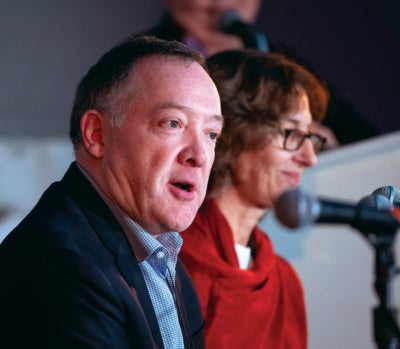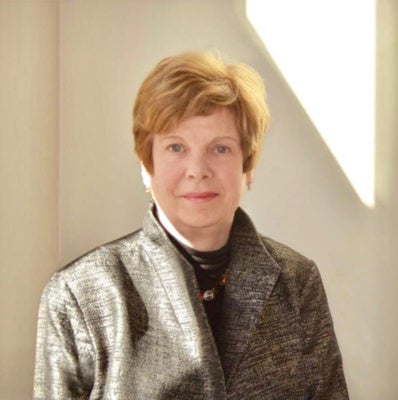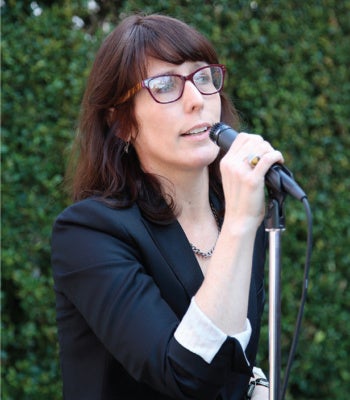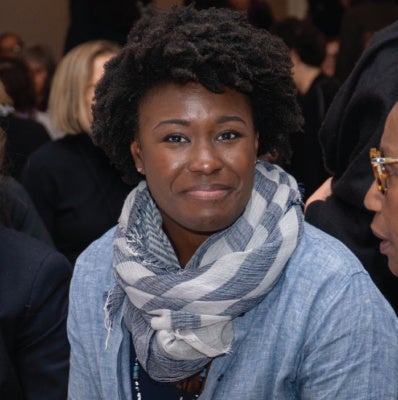In the early 2000s, a new type of philanthropist emerged. Visual artists were creating private foundations endowed with bequests of their creative works. The Aspen Institute wanted to know more about the phenomenon. So in 2007, the Institute’s Program on Philanthropy and Social Innovation—working with the Pollock-Krasner Foundation, Andy Warhol Foundation for the Visual Arts, and Roy Lichtenstein Foundation as well as the Ford, Getty, and Joyce Foundations, among many others—launched the National Study of Artist-Endowed Foundations. The goal was to count and measure this new philanthropic form, identify its effective practices, and address the lack of information facing artists who wanted to establish a foundation.
The study found that artist-endowed foundations tend to focus on two areas: (1) art stewardship, increasing public access to and knowledge of an artist’s creative works, and (2) cultural philanthropy, advancing nonprofit causes close to an artist’s heart. The foundations make grants to organizations and individual artists, and operate programs like study centers, exhibition collections, artist residencies, and art-education projects. Originally released in 2010, the study’s data are updated every five years. According to the most recent update, more than 40 percent of the 400 foundations identified were created in the past 15 years. What’s more, the field’s aggregate assets more than doubled from 2010 to 2015, rising to $7.7 billion, while charitable expenditures rose 35 percent to $178 million.
Intrigued by the study’s findings, arts leaders expressed a desire to learn more. And so the Institute took what had been a research project and recast it as the Artist-Endowed Foundations Initiative, which in 2016 launched the Seminar on Strategy for AEF Leaders—its professional education program. The weeklong, New York City–based course is unique: each day, seminarians come together at a different facility and meet a wide array of experts and seasoned foundation leaders. The Joan Mitchell, Judd, Dedalus, Richard Avedon, Helen Frankenthaler, Nancy Graves, and Gordon Parks Foundations have all hosted the seminar.
Accepted applicants include current or incoming foundation leaders and those close to a living artist who is planning for the future. Participants include nonprofit administrators, artists’ studio managers, museum directors, curatorial advisors, former art dealers, and artists’ families. By the end of 2020, there will be more than 100 seminar alumni. The four reflections below offer a few perspectives from this dynamic community.
Christine J. Vincent is the project director for the Institute’s Artist-Endowed Foundations Initiative.

Charles H. Duncan
Executive Director, The Richard Pousette-Dart Foundation
In 2014, I became the executive director of the Richard Pousette-Dart Foundation, newly established by the abstract expressionist painter’s family to support the arts and advance an understanding of his contribution to the arts. My prior post at the Smithsonian’s Archives of American Art concentrated on artists’ archives. But I discovered a challenge facing many AEF leaders: high-value artworks serve as both financial and charitable-use assets, requiring specialized expertise if they are to be deployed in compliance with private foundation rules. I participated in the Seminar on Strategy for AEF Leaders in 2016 in order to learn more.
The seminar addressed a variety of topics integral to success for AEF leaders, including ethical, copyright, stewardship, and regulatory issues. Each day, our gathering visited the facility of a different prominent AEF, affording an inside view of the field’s varied forms. By the end of the week, AEF leaders from across the country had evolved into close and lasting colleagues.
Today, our foundation operates a research center located in Poussette-Dart’s former studio, now listed on the National Register of Historic Places. Recently, we organized the first United Kingdom exhibition of his work, held at Cambridge University, and guided conservation of his work in the collection of the New York City hospital system. Our grants have supported nonprofit arts publications, K–12 visual-arts education, and a fund to benefit artists affected by Covid-19.
I work in concert with a board that is also new to this
philanthropic form. The knowledge I gained from the seminar and shared with our board enabled our foundation to move forward efficiently and with clarity, developing its mission to reflect the creativity and generosity of the artist. As a teacher, Pousette-Dart stressed that each student must “get on the thread of his or her own being.” Similarly, each AEF forwards its own outlook, but its leader can turn to AEFI for support.

Susan Larsen
Executive Director, The Dorotha and Leo Rabkin Foundation
AEFI’s 2016 Seminar on Strategy for AEF Leaders could not have come at a better time. My lifelong friend and mentor, abstract artist Leo Rabkin, had passed away in his New York studio in February 2015 at the age of 96. He left 2,500 works of art, a real-estate portfolio, and a mission statement asking his foundation to assist individual art journalists in these precarious days for America’s newspapers. As a new executive director, I knew how to handle a large art collection based on my long career as a professor of art history and a museum professional. But the world of charitable tax-exempt private foundations created by visual artists is very new. As our board and staff began defining a formal program, we had many questions.
The very first day of the seminar was life-changing. It drove home the imperative of a public benefit as the central reason for the very existence of AEFs. We were asked, “What is the public benefit? How does stewardship of an artist’s creative legacy redound to that purpose?” The artist’s studio is a solitary place of private privilege where artists strive for public engagement through their work. But an AEF has to do direct tangible good for others in order to fulfill its mission.
As we created our headquarters in Portland, Maine, and built a program of awards for America’s working art journalists, we framed the letter and spirit of our program on the questions asked during the seminar’s five packed days. The ideas and inspiration I gleaned from those hours encouraged generosity in our board’s perspective on the national field of art writers and with our local schoolchildren and citizens who frequent our gallery. At each turning point in the foundation’s evolution, the ethical, legal, and public-benefit frameworks provided by the seminar were vital. Now, with Covid-19, we will need to go even further in our mission and help rebuild our world.

Mary Clare Stevens
Executive Director, Mike Kelley Foundation for the Arts
Many artists provide for a foundation in their estate plan, but the LA–based multidisciplinary artist and teacher Mike Kelley created his foundation when he was just 57. Achieving unexpected success, he wanted to help now, not later. He made annual gifts to the foundation, which used his funds to make grants to the arts. As Mike’s longtime studio manager, I managed the foundation alongside his studio and business operations. When Mike died, in 2012, I became consumed with administering his estate and working with a new board on transitioning the Mike Kelley Foundation for the Arts to a fully endowed foundation holding his artworks, archive, intellectual property, and studio. What had been a distant idea was now shockingly immediate.
Settling an estate can take years. In our case, it took four, in which time unfinished projects had to be completed—a worldtouring retrospective organized by the Stedelijk Museum and his only permanent public sculpture, the Mobile Homestead in Detroit/MOCAD. Finally, in 2015 we were able to plan the MKFA Artists Project Grant, targeted to LA artists and arts organizations. The 2016 Seminar on Strategy for AEF Leaders was the perfect opportunity to pause and think long term.
The course plunged a small group of leaders into the A to Z of AEFs, covering topics vital to financial sustainability, art stewardship, and charitable impact, and offering an inside view of established foundations so we could see the ideas in practice. Conversations with colleagues revealed shared struggles and a variety of approaches. It was inspiring and comforting: We weren’t alone. The generosity and camaraderie of my seminar colleagues, the experts, and the experienced AEF faculty continue to inform my work at the foundation, which just announced the fifth round of its Artists Project Grant alongside emergency grants for artists impacted by Covid-19.

Faith Wallace-Gadsen
Board Member, Anyone Can Fly Foundation
The first day of the Seminar on Strategy for AEF Leaders is like being thrown into an ice bath. I was surrounded by new foundation leaders, artists’ family members, studio managers, and heads of artists’ collections—and we all spent the day with sharp intakes of breath. It was a crash course in how we might unknowingly put a foundation’s tax-exempt status at risk, and how to avoid such danger, that none of us had realized we needed. This abrupt start created an immediate glue that bound us together as we forged through learning the intricacies of AEFs and getting an inside look at renowned foundations across New York City.
I participated in the 2019 seminar as a board member of Faith Ringgold’s Anyone Can Fly Foundation, established by my grandmother in 1999. Named for the inspirational spirit evoked in her award-winning book, Tar Beach, its mission is to expand the received art canon to include artists of the African diaspora, long excluded in teaching, scholarship, and museums. In the past 20 years, the foundation’s programs have honored the achievements of artists like David Driskell, Elizabeth Catlett, and Samella Lewis; promoted awareness of master African American artists through awards to scholars; and funded art education and art making in K–12 public schools.
Looking ahead, the foundation will posthumously preserve and educate the public about the work of Faith Ringgold, now 89, a master artist in her own right. What I learned and passed on to other board members was invaluable in preparing the foundation for its next role. I came from outside the arts community, having spent my career in social enterprise and international development. The seminar not only provided raw knowledge but a wealth of experience from classmates, speakers, and alumni. I look forward to the Anyone Can Fly Foundation’s continued involvement in the seminar community and hope to be able to give back in the future.